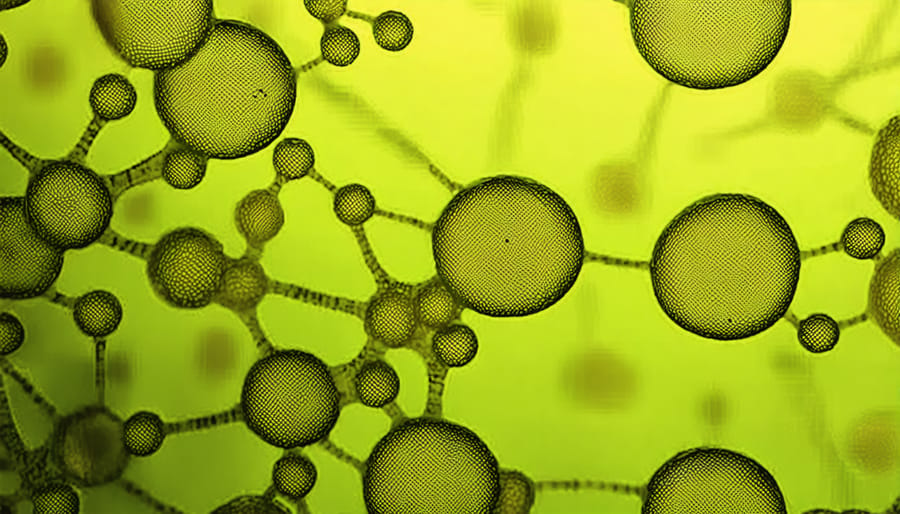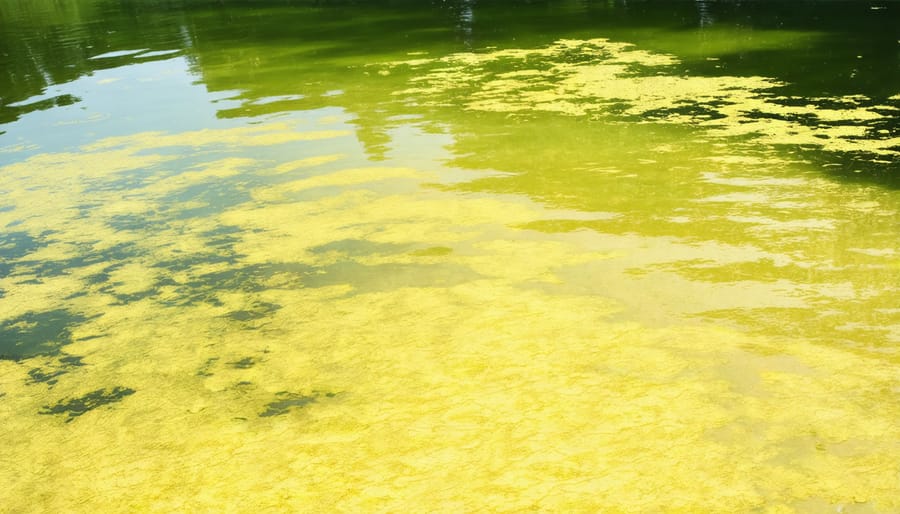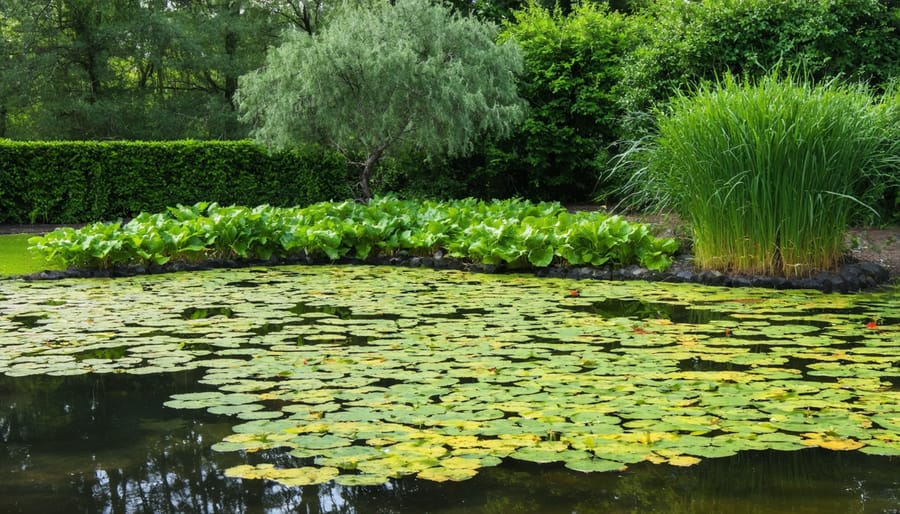
Yellow-Green Algae: Smart Solutions for Every Season
Yellow-green algae transforms pristine ponds into murky, unappealing water features, but understanding this common aquatic organism empowers pond owners to maintain crystal-clear waters. These microscopic organisms, scientifically known as Xanthophyceae, thrive in nutrient-rich environments and can quickly multiply during warm, sunny conditions. Unlike their bright green cousins, yellow-green algae create a distinctive golden-brown or pale yellow tint in the water, often accompanied by a slightly oily surface film.
For pond enthusiasts and homeowners, identifying yellow-green algae early is crucial for maintaining healthy aquatic ecosystems. While these organisms naturally occur in most water bodies, their excessive growth can reduce oxygen levels, harm fish populations, and diminish the aesthetic appeal of your water feature. The good news is that with proper understanding and maintenance techniques, you can effectively manage yellow-green algae while preserving your pond’s natural balance and beauty.
Identifying Yellow-Green Algae in Your Pond
Common Types and Appearances
Yellow-green algae commonly appear as a thin, cloudy film that gives pond water a distinctly yellowish or greenish-brown tinge. Unlike regular green algae, it rarely forms thick mats or stringy growths. Instead, you’ll notice your pond water becoming murky and less transparent, with a characteristic mustard-like color.
The most common type you’ll encounter is suspended yellow-green algae, which floats freely in the water. This type can make your pond look like pea soup on bad days! Some species might form a thin film on the water’s surface, especially in calm areas of your pond.
To distinguish yellow-green algae from other types, look for these telltale signs: a yellowish cast to the water rather than bright green, absence of long stringy growths, and water that appears more cloudy than clearly green. When you scoop up some water in a clear glass, it should look like weak tea rather than the vivid green you’d see with common green algae.
You might also spot yellow-green algae forming slight deposits on pond walls or decorative features, but these are usually thin and easily brushed away.

Seasonal Growth Patterns
Yellow-green algae follows distinct patterns throughout the year, making it easier for pond owners to anticipate and manage its growth. During spring, as temperatures rise and daylight hours increase, these algae begin their active growth phase. You’ll typically notice the first signs in early spring when water temperatures reach around 50°F (10°C).
Summer brings peak growth conditions, with warm waters and abundant sunlight providing ideal conditions for rapid multiplication. This is when many pond owners notice the most substantial algae presence, particularly in areas with direct sun exposure. However, extremely high temperatures above 85°F (29°C) can actually slow down their growth.
Fall sees a gradual decline in algae activity as temperatures drop and daylight decreases. Some species may turn reddish or brown during this period. Winter brings dormancy for most yellow-green algae, though some hardy species can survive under ice. They typically form protective cysts that sink to the bottom, ready to emerge when spring returns.
Understanding these seasonal patterns helps in planning preventive measures and maintenance schedules throughout the year.

Natural Prevention Methods
Beneficial Plants
One of the most effective ways to naturally control yellow-green algae is by introducing beneficial aquatic plants that compete for the same nutrients. Water lilies are excellent choices, as their large floating leaves shade the water surface and reduce algae growth. Hornwort and anacharis are particularly effective underwater plants that absorb excess nutrients while producing oxygen. These plants also provide shelter for beneficial pond creatures.
Consider adding marsh marigolds and iris along the pond edges – they’re not only beautiful but also excellent nutrient absorbers. Water hyacinths and duckweed can quickly colonize the water surface, though they need regular thinning to prevent overgrowth. For deeper areas, try submerged plants like vallisneria or water milfoil.
Remember to maintain a good balance – aim for about 60% of your pond’s surface to be covered by plants. This creates a natural ecosystem where algae struggle to dominate while keeping your pond looking beautiful and healthy.

Water Balance Tips
Maintaining proper water balance is crucial in preventing yellow-green algae from taking over your pond. Start by regularly testing your water’s pH levels, aiming for a range between 6.8 and 7.2. This sweet spot makes it harder for algae to thrive while keeping your fish happy.
Keep an eye on your pond’s nutrient levels, especially phosphates and nitrates. These are like fast food for algae! Remove fallen leaves promptly and avoid overfeeding your fish – uneaten food breaks down and releases these nutrients into the water. A good rule of thumb is to feed only what your fish can consume in about 5 minutes.
Consider adding floating plants like water lilies or water hyacinth. These beautiful additions naturally compete with algae for nutrients and provide shade, which helps reduce algae growth. Remember to clean your filters regularly and perform partial water changes (about 10-15%) every few weeks to remove excess nutrients before they become algae fuel.
Seasonal Management Strategies
Spring and Summer Care
Spring and summer are peak seasons for yellow-green algae growth, requiring extra vigilance in your pond maintenance routine. As temperatures rise and sunlight intensifies, these algae can multiply rapidly, especially in nutrient-rich waters. Start your prevention efforts in early spring by removing dead plants and debris that can feed algae growth.
During these warmer months, maintain proper water circulation using fountain pumps or aerators. This helps disrupt algae formation while increasing oxygen levels. Consider adding more floating plants like water lilies or lotus, which naturally compete with algae for nutrients and provide beneficial shade.
Regular water testing becomes crucial in summer. Check phosphate and nitrate levels weekly, adjusting your filtration system as needed. If you notice yellow-green patches forming, use a fine-mesh net to manually remove them before they spread. Remember to avoid chemical treatments during peak growing seasons, as they can harm beneficial pond life.
For long-term control, introduce beneficial bacteria monthly and maintain a healthy balance of aquatic plants. Keep your pond slightly shaded during the hottest parts of the day to reduce excessive algae growth.
Fall and Winter Maintenance
As temperatures drop, yellow-green algae growth typically slows down, but that doesn’t mean you should let your guard down. Fall is the perfect time to prepare your pond for the challenges ahead with proper winter pond maintenance. Start by removing fallen leaves before they sink and decay, as decomposing organic matter can fuel algae growth when temperatures rise again.
Install a pond net to catch falling leaves and maintain your filtration system at a lower but consistent speed. While chemical treatments aren’t usually necessary during cooler months, continue monitoring water quality regularly. Keep your pond’s depth at least 18 inches to prevent complete freezing and protect beneficial bacteria that help control algae.
Don’t forget to trim back any dying aquatic plants and remove debris from the bottom of your pond. These simple preventive steps during fall and winter will give you a head start on controlling yellow-green algae when spring arrives.
Managing yellow-green algae in your pond doesn’t have to be a constant battle. By understanding its behavior and implementing the strategies we’ve discussed, you can maintain a healthy, balanced ecosystem that naturally keeps algae growth in check. Remember to focus on prevention through proper filtration, appropriate plant coverage, and regular maintenance rather than relying solely on treatments. Consider your pond as a living ecosystem where every element plays a crucial role. By adopting sustainable practices like reducing nutrient loads, maintaining beneficial bacteria, and choosing the right mix of aquatic plants, you’ll not only control yellow-green algae but also create a thriving water garden that brings joy throughout the seasons. Stay proactive, be patient with natural solutions, and enjoy watching your pond flourish with crystal-clear water and healthy aquatic life.
